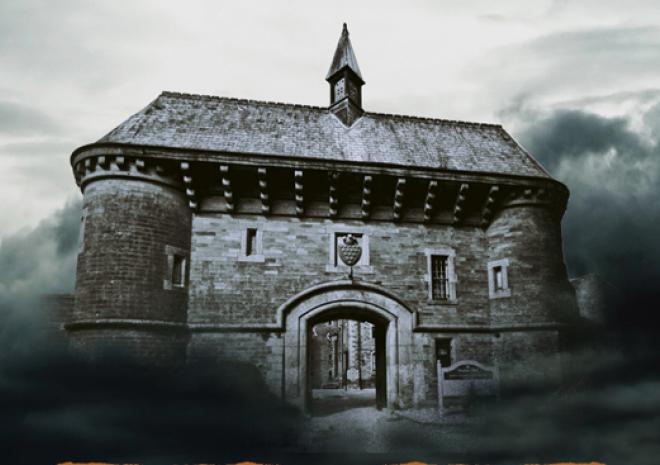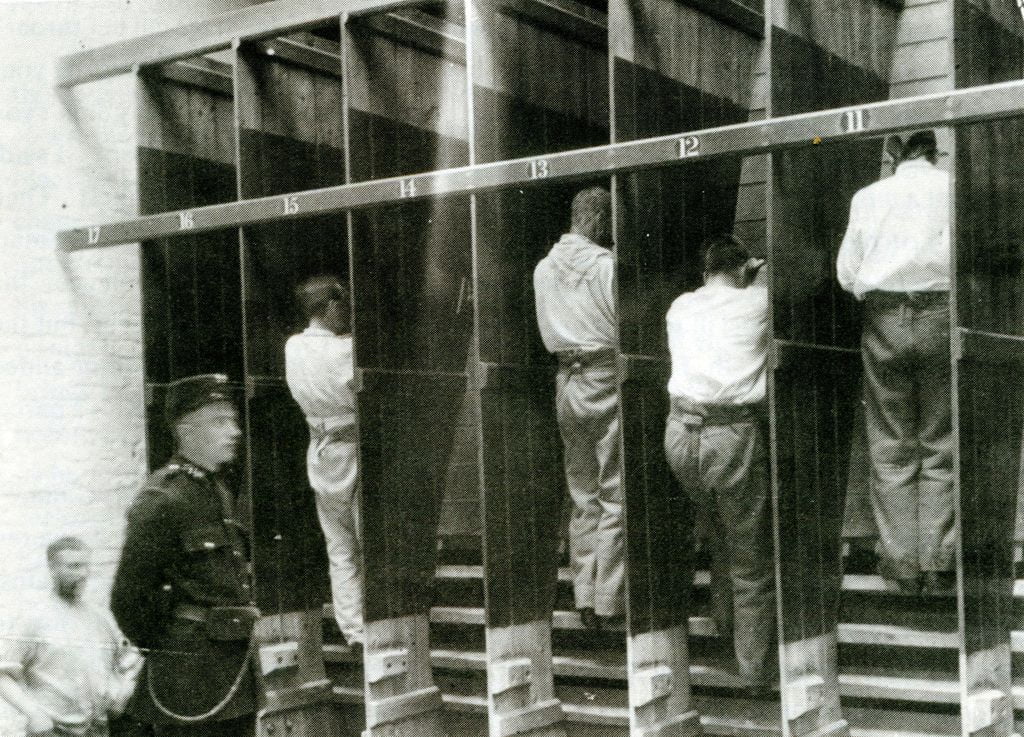Today it frequently appears that “crime pays”. Lack of discipline within the family group allied to a vast drift away from church and chapel, where a Christian way of life was learned and practised from early childhood, has resulted in a vast decline in moral standards. Government encourages selfish rampant individualism where the wealthy flourish and the poor decline, and where there is often one law for the rich and another for the poor. The sentences of wrong-doers frequently fail to reflect the enormity of their crimes, and even long sentences are subsequently greatly reduced. In the nineteenth century there was certainly no “pussfooting” around. Punishments were harsh, and imposed by a judicial system, backed by the aristocracy, which was aimed to deter crime and to keep the working class in its place within society. In 1815 there were 200 crimes punishable by death, which included the theft of anything worth more than a shilling. By 1840 reform had reduced the death penalty to 14 crimes, but there was still no noticeable reduction in offences. Much of this thinking was inspired by the horrors of the French Revolution, which still lingered in the minds of the aristocracy, by rioting brought on by the high price of bread etc., and by the rise of unionism in the industrialised areas of England. In Cornwall the economy was based on mining, fishing. agriculture – and on smuggling, all of which occupations were prone to slumps either by a fall in mineral prices, the failure of the pilchard shoals to appear, or adverse weather conditions. There was constantly much unemployment and poverty within the working class, an environment in which, as we see today, crime tends to flourish. In times of riot the military was called upon to restore order, but for individual crimes it was usually the part time parish constable who detected criminals and made arrests. A study of nineteenth century Cornish newspapers gives us examples of the types of crime which were committed, and of the punishments; full details of the numerous cases which appeared at trials held at Bodmin, Launceston and Lostwithiel were published. Thefts from the drying-houses of mines were common. Here, the miners changed into their underground garb, leaving their clothing unattended whilst they descended into the cavernous depths. At the Cornwall Quarter Sessions held at Lostwithiel in August 1823, Richard Sampson, a farmer, was indicted for stealing two jackets, a shirt and a handkerchief belonging to Stephen Donald, at Wheal Speedwell Mine, Breage. The latter had taken his clothes off before his “core”, or shift, and “put on a woollen dress worn by miners when at work in the mines”. The clothes were later found in a sack, buried in the garden of Sampson’s mother. He was sentenced to two months hard labour. The reference to the “woollen dress” is of some interest, as we appear to find no references to this form of clothing in books of mining history. In 1853 it was reported that in winter, boys at work on the mines “wore a thick woollen frock over their outer clothes”. Philip Andrewartha was an engine man at Wheal Rose Mine, Scorrier. He had left his silver watch, hanging from its steel chain in the engine-house, but found later that it has been stolen. The following day he was amazed to see it in a shop window in Kenwyn Street, Truro. On enquiring, he was told that Thomas Teague had brought it to the shop under the pretence that it required repairing, but then sold it to the shop owner for 20 shillings. Teague was sentenced to be whipped, and imprisoned for three months. Thomas Lawer, who worked at Wheal Golden Mine, had his jacket stolen after leaving it in the boiler-house, which was used as a “dry” by the mines. John Bawden was sentenced to two months hard labour when it was found in his mother’s house at Goldsithney. Penalties were equally as harsh for the young, as when Thomas Penhall, aged 13 years, stole two ducks, he was imprisoned for a month with hard labour, and whipped. To break into a house, by night or day, to commit burglary, was a capital offence. When William Nettle did this at the home of John Carlyon, near St. Austell, stealing a pound coin and a watch, he was extremely fortunate to be only transported, and not hanged. He probably went to Botany Bay, in Australia. In March, 1824, at Launceston Assizes the sentences were extremely harsh. Thomas Berry was sentenced to death for burglary, having stolen sixteen one pound “notes of the Mevagissey Bank” from Philip Ellis of St. Ewe. William Cross, 25 years old, and his brother John, 15 years old, crossed into Cornwall from Devon and stole a bay gelding valued at £20, and a black horse valued at £15 from Mr. Henry Hawkey of St. Wenn. They then rode them across the border and sold them at Exeter, where they were arrested and charged. They were both sentenced to death. Daniel Lawlow, an unemployed German, lived with his family in a little cottage on Sithney Common, near Helston. Having no money to buy food for his children, he stole and killed a sheep belonging to a neighbouring farmer, Christopher Harris. Harris, finding the sheep missing, said he called the local constable and both then searched Lawlow’s cottage. There they found the roughly hacked carcass of a sheep, and subsequently located the skin tossed into a mine shaft. At his trial Lawlow pleaded not guilty stating that because he was a foreigner, Harris had a grudge against him, and had falsified the evidence. Nevertheless, he was sentenced to death. Smuggling was a virtual “industry” carried out on a tremendous scale. Thomas Stone of Cawsand was arrested on 20th March 1826 by two preventive officers for “intent to signal to smugglers at sea”. They had seen him produce sparks of fire, two or three times from the top of a lime-kiln there, by striking a flint and a steel together which was visible to a boat a mile off shore. Poor Thomas was sentenced to two months hard labour. In 1825 a man called Spry was accused of lighting a fire on the coast of Wendron parish to warn smugglers of the approach of customs officers, and of shouting a warning to the smugglers. Spry was fortunate that he had prominent friends in the area, no doubt those who benefited from his smuggling activities. They wrote letter to the court and he was acquitted with a warning. In 1823, three men came into Cornwall posing as rat-catchers in order to gain access to homes. Two of them were arrested at Marazion for stealing a watch from the house of Michael Hill on St. Michael’s Mount. When examined before the mayor of Marazion, it was obvious that they had thrown the watch away when being pursued. As there was insufficient evidence, they were dismissed, but one was immediately apprehended by a gentleman of the town, under the Vagrancy Act “for pretending to read fortunes”. Any chance of leniency was forfeited when the accused threatened the life of his persecutor before the mayor, who, describing him as a “dangerous character”, sent him to Bodmin Gaol “to take three months exercise on the treadmill”. The treadmill was loathed by prisoners, as each mill was equivalent to a 12,000 foot ascent each day. It was an ancient appliance used, even by the Romans, in raising water, and later, for the same purpose, in castles and prisons during the sixteenth century. It was introduced as a penal appliance by William Cubitt in 1818, an engineer son of a Lincoln miller. Cubitt had got the idea on seeing prisoners at Bury Prison idling away their time in the yard. He immediately thought that they could be better employed in grinding corn, and so designed the treadmill. It was comprised of a large hollow cylinder of wood on an iron frame, round the circumference of which were a series of steps about seven and a half inches apart. The criminal, steadying himself by handrails on either side, trod on these, his weight causing the mill to revolve, compelling him to take each step in turn. (In 1871 each man did alternate “shifts” of 4 hours, resting at its foot between shifts – a much less rigorous system then before.) It was exhausting work, which left little energy to cause trouble at the end of the day. In May 1827 it eventually caused a riot in Bodmin Gaol when the prisoners on hard labour “refused to go on the Treadmill on Monday last (14th May) and resolved to resist every attempt to compel them to resume their labour”.

Two of the investigating magistrates, the Rev. Joseph Pomeroy and the Rev. Nicholas Kendall were sent for and remonstrated, in vain, to the prisoners who were all on “hard labour” sentences. The rioters then tore up the handrails round the wheel, arming themselves. and prepared for resistance. The staff of the Cornwall militia was called. Armed, and provided with ammunition. they drew up in orderly ranks in the outer yard of the prison where they were greeted with jeers by the rioters who then called three cheers and shouted: “Death, or glory!” The magistrates made a final plea. but decided that force should be met by force and gave the order to advance on the rioters and were eventually subdued after their ringleaders were secured and placed in separate cells. A prisoner called Sowden. from Camborne, who had been convicted for a violent assault on the constables of that town as the ring leader, and he was ordered by the magistrates to ascend the treadmill. When he refused, to make him an example and to assert their authority, he was severely flogged in front of the other prisoners. They needed little persuasion to ascend the treadmill on seeing Sowden’s back nearly cut to the bone, and promised obedience – with the promise that they would receive a clean shirt even day! Initial reports that the militia had used rifle butts to subdue the rioters were denied, whilst stating that the prisoners had since been orderly and the ringleaders released from their cells. Some would suggest that the treadmill should be reintroduced as a punishment for today’s violent offenders.
